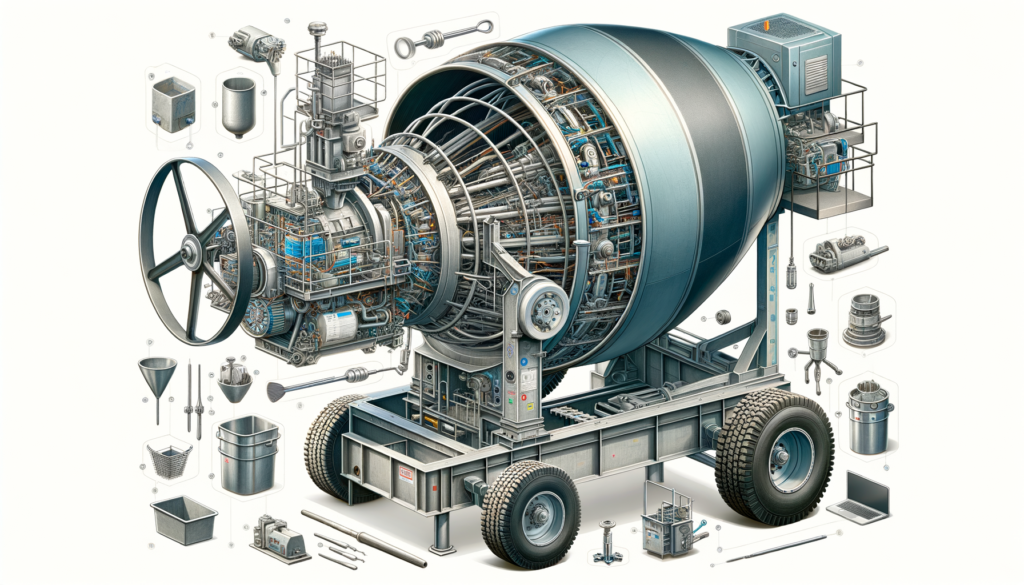The Gaming Blog

Understanding Concrete Mixers
Introduction to Concrete Mixers
Concrete mixers play an essential role in the construction industry, providing the necessary blend of cement, water, and aggregates to create concrete. This mixture is crucial for constructing buildings, roads, and various infrastructures. The importance of concrete mixers lies in their ability to deliver consistent and uniform mixes, which are vital for the structural integrity of construction projects. By understanding the different types of concrete mixers and their functions, construction professionals can enhance efficiency and quality in their projects.
Types of Concrete Mixers
Concrete mixers come in various types, each designed to meet specific needs and project scales. The two primary categories are batch mixers and continuous mixers. Batch mixers are commonly used for smaller projects and involve mixing a set amount of concrete at a time. Types of batch mixers include drum mixers and pan mixers. Drum mixers, the most prevalent, feature a rotating drum that mixes the concrete components. Pan mixers, on the other hand, have a stationary pan with rotating blades to mix the materials.
Continuous mixers are ideal for large-scale projects requiring a constant supply of concrete. These mixers continuously blend materials, allowing for uninterrupted construction processes. Within this category, there are volumetric mixers, which measure and mix materials on-site, providing flexibility and reducing waste. Choosing the right type of mixer depends on project requirements, such as volume, speed, and location.
Key Features and Innovations
Modern concrete mixers boast a range of features that enhance their functionality and efficiency. Some key features include:
- Automated controls: These allow for precise mixing ratios and consistent quality.
- Portability: Many mixers are designed to be easily transported to various job sites.
- Durable materials: High-quality steel and corrosion-resistant components extend the lifespan of mixers.
Recent innovations in concrete mixers focus on sustainability and efficiency. For instance, some models incorporate eco-friendly technologies that reduce emissions and energy consumption. Additionally, advancements in digital control systems enable real-time monitoring and adjustments, ensuring optimal performance and minimal waste.
Choosing the Right Concrete Mixer
Selecting the appropriate concrete mixer involves considering several factors, including project size, location, and budget. For small-scale projects, portable drum mixers might be sufficient, offering ease of use and transportation. However, for large-scale or commercial projects, continuous mixers or volumetric mixers may be more suitable due to their ability to produce large volumes of concrete efficiently.
Other considerations include the power source, with options ranging from electric to diesel-powered mixers. Electric mixers are quieter and more environmentally friendly, while diesel mixers offer more power and are better suited for remote locations without electricity access. By evaluating these factors, construction professionals can make informed decisions that align with their project needs.
Maintenance and Safety Tips
Proper maintenance is crucial for the longevity and performance of concrete mixers. Regular cleaning after each use prevents material build-up and potential mechanical issues. It’s also important to inspect the mixer for wear and tear, particularly the blades and drum, which are subject to significant stress during operation.
Safety is another critical aspect when operating concrete mixers. Operators should be trained to handle the equipment safely, adhering to guidelines such as wearing protective gear and ensuring the mixer is on stable ground. Additionally, understanding the mixer’s weight limits and avoiding overloading can prevent accidents and extend the equipment’s lifespan.
By following these maintenance and safety tips, construction teams can ensure their concrete mixers operate efficiently and safely, contributing to successful project outcomes.









